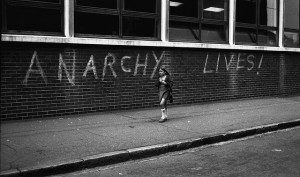 Listed below is a selection of my writings on anarchist feminism, dating from the 1970s to the present. If you are interested in something I’ve written that doesn’t appear here, please let me know and I will try to help. Links to groups, activists and researchers in related areas can be found in Links and Resources.
Listed below is a selection of my writings on anarchist feminism, dating from the 1970s to the present. If you are interested in something I’ve written that doesn’t appear here, please let me know and I will try to help. Links to groups, activists and researchers in related areas can be found in Links and Resources.
What counts as political work? How are activists, movements, communities, economically, physically and emotionally sustained and by whom? (2010 The Gender Politics of Anarchist History)
2022 (1981) Tom Keell Wolfe, the son of anarchists Lilian Wolfe and Tom Keell, talks about his parents, life in the anarchist colony Whiteway, war resistance, and friendships with Emma Goldman, Sylvia Pankhurst, George Orwell and others, in this 1981 interview.
2022 (1980/1981). Unpublished interview notes with activist Kitty Lamb (1901 – 1992) about her life and the development of her anarchist beliefs. They give an insight into some of the shifting social and political groupings, campaigns and alliances of the twentieth century as well as her lifelong commitment to a better world.
2014 (1977). Women activists speak about anarchism, feminism and the interrelationship of the personal and the political in interviews from 1977 by Lynn Alderson and Judy Greenway.
2011. How are ideas of sexual and political dangerousness connected? How can we challenge the polarization between academics and activists, theory and practice, and find new ways of propagating ideas?
Preface to Anarchism and Sexuality: Ethics, Relationships and Power, eds. Jamie Heckert and Richard Cleminson.
2010. Gendered approaches to anarchist history can generate new ideas about anarchism past, present and future.
Paper given at PSA conference, Edinburgh, 2010.
2009. Anarchists and others debate free love in theory and practice. What is the relationship between sexual freedom and social transformation?
Chapter from Laurence Davis and Ruth Kinna, eds, Anarchism and Utopianism.
2003. How did ideas about free love and sexual liberation change among anarchists and libertarians between the 1880s and the 1970s? Paper given at Past and Present of Radical Sexual Politics, Amsterdam.
2002. How do the realistic and practical, the utopian and impossible, become polarised? And what difference does gender make? Discusses women’s fictional and non-fictional accounts of utopian experiments in 1890s England. Article from Geografisker Annaler 84 B.
1998. ‘How can one classify and label the different kinds of love?’ Discusses how fin-de-siècle feminists and sexual radicals creatively reinterpreted Weininger’s misogynist theories to challenge restrictive categories of sex and gender. Chapter from Sexology in Culture: Labelling Bodies and Desires, eds. Lucy Bland and Laura Doan.
1997. Do new technologies and new theories of sex, gender, and the body pose a real challenge to existing power relationships? Chapter from Twenty-first Century Anarchism: Unorthodox Ideas for a New Millennium, eds. Jon Purkis and James Bowen.
1993. Problems and tensions between men and women in utopian communities are nothing new, especially when it comes to sharing the housework. Chapter from Diggers and Dreamers 94/95, eds. Chris Coates, Jonathan How, Lee Jones, William Morris, and Andy Wood.
1977. Challenges divisions between the Gay and Women’s Liberation movements, and the indifference of the left, in the context of a violent anti-gay backlash. Article co-authored with Margot Farnham, from Zero 3, October/November 1977.
NEW UPLOAD! 1976. Difficulties in dealing with disagreements and controversy can lead to suppression of dissent and a ‘tyranny of virtue’ within some parts of the Women’s Liberation Movement. This article written in the Seventies has resonances for current debates. From Catcall 4, September/October 1976, pp. 2-6. London: Catcall Collective.
1975. ‘The Women’s Liberation Movement has made it possible to share and begin to analyse experiences and feelings usually kept private.’ Article from Wildcat No.6, March 1975.